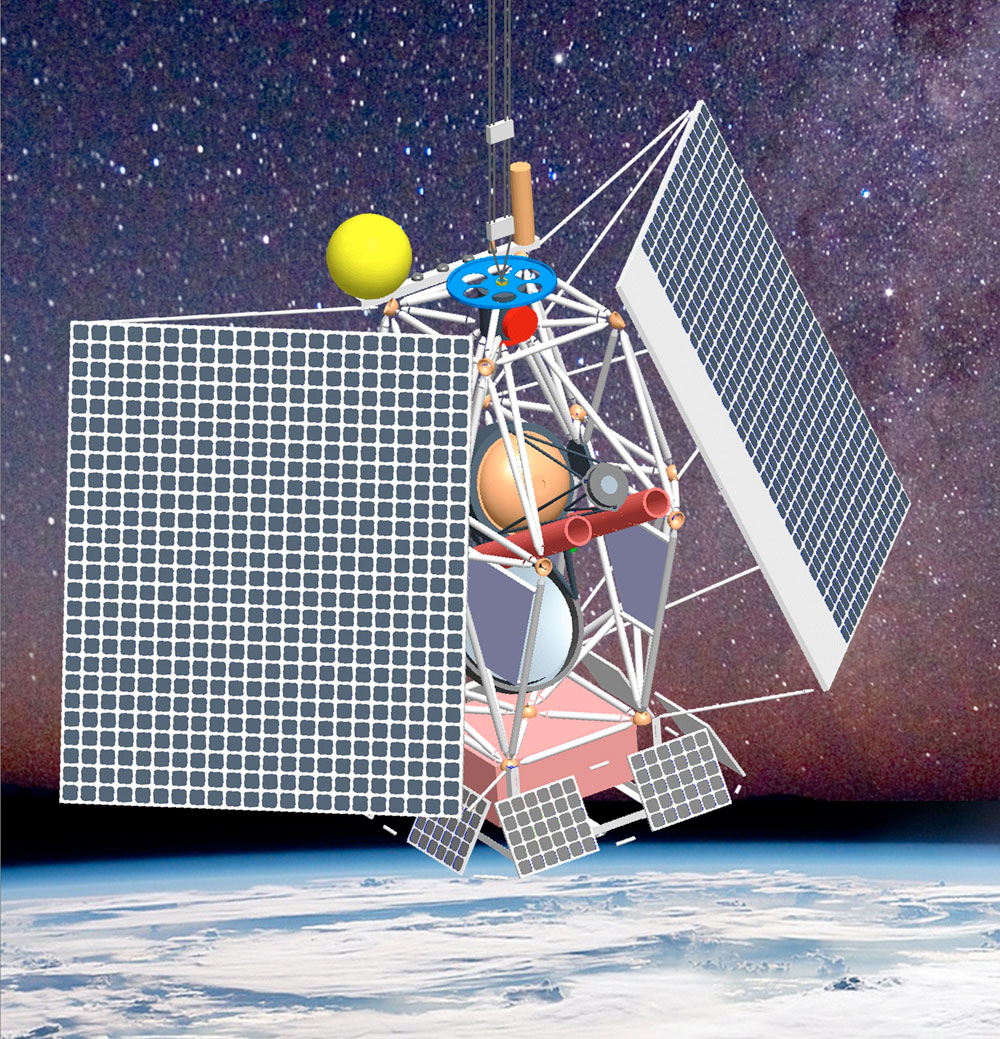TU physicists are building terahertz sensors for Nasa’s ballooning mission, Gussto, set for launch in 2017. The mission will study interstellar dust and gas clouds where stars are born.
Terahertz astronomy opens a new window on the universe. In between radio waves and infrared radiation, terahertz waves travel long distances through interstellar space. On Earth however virtually all radiation is absorbed by moisture in the atmosphere, which is why terahertz astronomy, which promises to give clues about how stars and planets are formed out of gas clouds, is only practiced from the highest mountain peaks (Alma in Chile) or from satellites (Herschel space telescope, launched in 2009). The proposed Gussto mission will use a balloon to reach the edge of space at an altitude of 36 kilometres above the South Pole. The mission’s duration is two periods of 50 days each, with a refill in between for topping up the cryogenic helium.
The Gussto (Galactic/galactic Ultra long duration balloon Spectroscopic Stratospheric THz Observatory) mission is led by Professor Christopher Walker (University of Arizona), who selected SRON (Netherlands Institute for Space Research), and TU researcher Dr Jian-Rong Gao, to serve as the mission’s detectors. Why? “Because we’re the best in the world,” Gao explains, referring to the experience that Professor Teun Klapwijk’s research group at the Kavli Institute of NanoScience has in building terahertz detectors. The group was also involved in making the Herschel and Alma detectors.
The new imager will be 1 square inch in size and feature 16 pixels consisting of improved supersensitive and low-noise detectors. Each detector has an on-chip antenna (smaller than 0.1 millimetre), and a superconducting nanobolometer, with a ‘hot’ electron in the middle, that remains on the verge of normal and superconductivity. Incoming terahertz radiation causes large variations in the electrical resistance. Moreover, the antenna’s signal is mixed with a reference signal in order to bring the frequency down to a manageable level – a technique called heterodyne detection.
Recent advances have increased the maximum detection frequency up to 4.7 THz, which is of particular interest as this allows for the detection of oxygen, as well as carbon and nitrogen, in space.
Gussto is one of two finalists in a Nasa competition: in 2013 the US space agency will decide which of the two projects will win a 55 million dollar grant.
In de zesde eeuw voor Christus leefden vier wijsgeren die elk op hun eigen manier harmonie predikten tussen mens, maatschappij en universum: Boeddha, Confucius, Lao-Tse en Pythagoras. Die laatste is vooral bekend vanwege zijn stelling, maar wie was hij eigenlijk en welke invloed heeft hij (gehad)? Op die vragen probeert ‘Pythagoras’ van wetenschapsjournaliste Kitty Ferguson antwoord te geven. Ze voegt zich daarmee in een traditie van 25 eeuwen, want de man was al bij leven een legende.
Vast staat dat Pythagoras in de eerste plaats een religieus en politiek leider was. Zijn leer draaide, net als bij Boeddha, om reïncarnatie maar was zo geheim dat hij en zijn volgelingen hem mee het graf in namen. Politiek is alleen zeker dat hij zoveel vijanden maakte dat hij de stad Croton in Italië, waar hij zijn school gesticht had, moest ontvluchten om het vege lijf te redden. In Croton deed hij zijn beroemde ontdekking dat er een direct verband bestaat tussen de lengte van de snaren van een lier en de toonhoogte die ze produceren.
Ferguson is dan op pagina 6 van haar boek en moet bekennen dat simpelweg niet meer dan dat bekend is over het subject van haar biografie – althans, wanneer je niet als vanzelfsprekend gelooft wat er later allemaal over hem verteld is. Uit de oudheid zijn vooral fragmenten van anderen over Pythagoras bekend en de eerste biografieën dateren uit de tweede en derde eeuw na Christus. De auteurs daarvan klagen al dat er zoveel verzinsels in omloop zijn dat het lastig is Pythagoras waarheidsgetrouw te portretteren. Was hij nou wel of niet een incarnatie van de god Apollo? Het viel moeilijk te zeggen.
De Pythagoras die Ferguson in haar boek onderzoekt is dan ook niet zozeer een mens als wel een idee, namelijk dat getallen ten grondslag liggen aan de harmonie van het universum. Ferguson laat zien hoe dit idee zijn weg vond in het westerse denken via Aristoteles en Plato. De Pythagoreïsche kijk op wiskunde was in Europa de norm tot de twaalfde eeuw, toen ‘De elementen’ van Euklides herontdekt werd en daarmee de axiomatische benadering die nu de norm is.
Pythagoras bleef echter wiskundigen inspireren, omdat Euklides weliswaar streng en praktisch is, maar niet de ‘schoonheid’ onderbouwt die veel wiskundigen in een mooie formule ontwaren. Copernicus, bijvoorbeeld, werd door Pythagoras geïnspireerd bij zijn beslissing om de aarde om de zon te laten draaien in plaats van omgekeerd. Ferguson legt deze minder bekende lijn in de geschiedenis van de wiskunde op een toegankelijke manier bloot. Een fascinerend boek met een origineel thema, maar in al zijn degelijkheid wel stevige leeskost.
Kitty Ferguson, ‘Pythagoras; his lives and the legacy of a rational universe’, Icon Books, pp. 366, 22 euro.





Comments are closed.